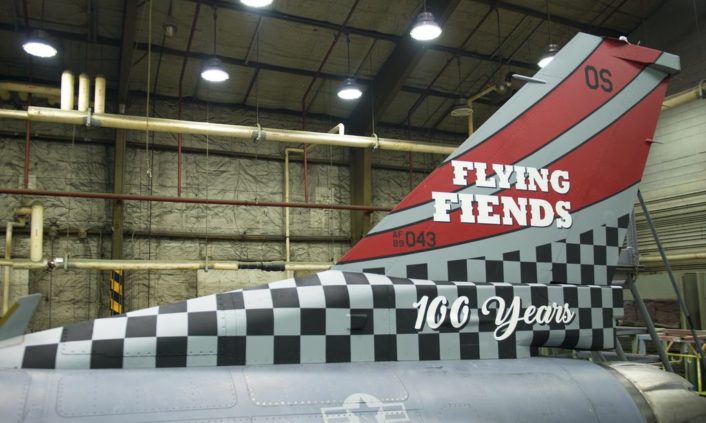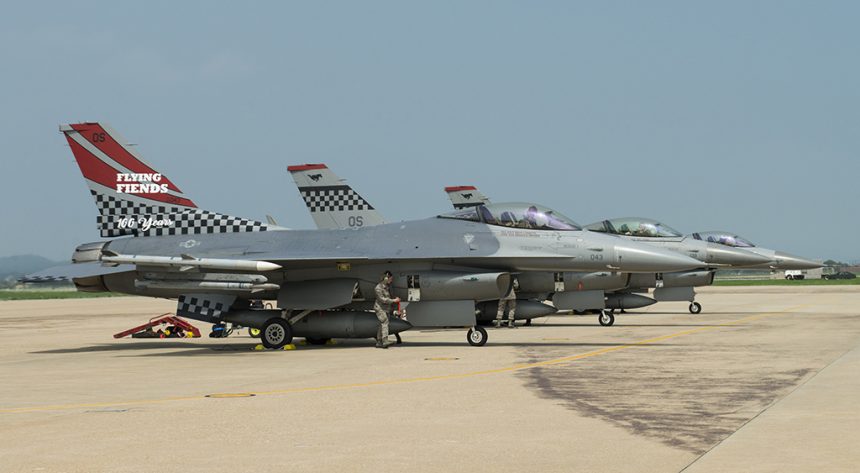A New Special Colored F-16 From The 36th FS Flying Fiends Was Unveiled At Osan Air Base, 50 miles south of the DMZ.
The 36th Fighting Squadron “Flying Fiends”, belonging to the 51st Fighting Wing, is one of the U.S. Air Force squadrons located closer to North Korea: based at Osan Air Base, South Korea, about 50 miles south of the Demilitarized Zone that separates North and South Korea, the squadron and its F-16s are on constant alert status.
“Being a Flying Fiend means to be a part of a legacy of more than 100 years of combat aviation. We’ve been involved in every major conflict from the 20th century: from World War I to WWII, the Korean War, the Vietnam War and about 36 years of alert readiness on the Korean peninsula,” said Capt. Wayne Mowery, 36th Fighter Squadron jet fighter pilot.
On Jul. 21, 2017, one week before North Korea tested a Hwasong-14 ICBM (Intercontinental Ballistic Missile), the 36th FS unveiled a newly refurbished F-16 Fighting Falcon during a Tail Flash ceremony at Osan AB.
The F-16 was brought back to life by members from the 51st Maintenance Squadron Corrosion Control Shop repairing and repainting its tail.
“Basically this was a clean slate, we had to sand everything down on this plane, all the old paint and [install] a new tail flash that was custom made,” said U.S. Air Force Senior Airman William Williams, 51st MXS sheet metal and corrosion technician in a public release.
“What we see in the tail flash is the combination of two distinctive histories. The red striped tail flash represents the history of the fabulous Flying Fiends. The tail flash specifically became famous during the Korean War as we flew with our red striped tail flash on our F-80 Shooting Stars and our F-86 Sabres,” said Mowery. “Underneath the red stripes you see the checkered tail design and that is the history of the 51st Fighter Wing, which we officially became a part of in 1974.”
The special color F-16, that flew ahead of the official Tail Flash ceremony, will probably take part in one of the next “Elephant Walk” a kind of exercise that is particularly frequent in South Korea where local-based U.S. Air Force jets (often alongside Republic of Korea Air Force planes) periodically stage such “collective shows of force” in response to North Korea’s aggressive posture and threats. Indeed, Osan is considered a key American facility in the region and among the targets of Pyongyang in case of war with the South.










